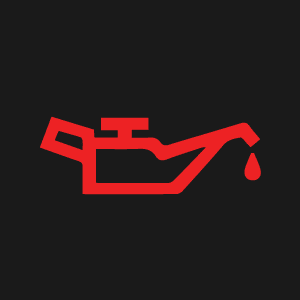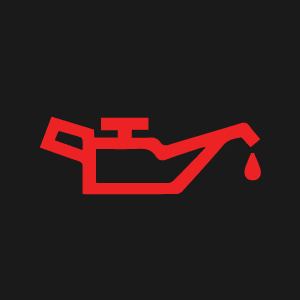The yellow oil light indicates low oil pressure, while the red oil light signals immediate action is needed. Understanding the difference between these dashboard warning lights is crucial for maintaining your vehicle’s health and safety.
When the yellow oil light illuminates, it could signify issues such as low oil levels, dirty oil, or oil leaks. In contrast, the red oil light requires prompt attention as it indicates low oil pressure, potentially leading to severe engine damage if ignored.
Knowing how to respond to these signals can help prevent costly repairs and keep your car running smoothly. Remember, safety first when it comes to responding to oil warning lights in your vehicle.
Deciphering Dashboard Colors
Meaning Behind Yellow And Red
When it comes to deciphering the colors on your car’s dashboard, understanding the meaning behind the yellow and red oil lights is crucial for vehicle maintenance and safety.
Color Coding Urgency
The color of the oil warning light on your dashboard holds vital information about the urgency of the situation. It is important to know the distinction between the yellow and red lights to take appropriate action.
The Yellow Oil Light
When the yellow oil light on your dashboard comes on, it’s an indication that your vehicle has low oil pressure. This drop in oil pressure could be a sign of a few things: you are low on oil, your oil is dirty, or you have an oil leak. It’s important to take immediate action when you see this warning light to avoid severe engine damage.
Causes For Illumination
There are several reasons why the yellow oil light may illuminate on your dashboard:
- Low oil level
- Dirty oil
- Oil leak
- Faulty oil pressure sensor
- Worn out engine parts
If you ignore the yellow oil light, it could lead to severe engine damage and costly repairs. Therefore, it’s essential to take immediate action when you see this warning light on your dashboard.
Responding To The Yellow Alert
If the yellow oil light comes on while you’re driving, you should pull over to a safe location and check your oil level. If your oil level is low, add oil immediately. If your oil level is fine, it’s best to have your car checked by a professional mechanic to identify any potential issues.
Driving with the yellow oil light on for an extended period is not advisable. It’s best to find a safe place to stop and have your car checked out. Remember, ignoring this warning light could lead to significant engine damage, so it’s best to avoid it if possible.
The Red Oil Light
When the red dashboard oil light illuminates, it indicates a critical issue that requires immediate attention. Ignoring this warning can lead to severe engine damage and safety risks.
Understanding The Red Warning
A red oil light typically signifies one of several urgent problems:
- Low oil level
- Low oil pressure
- Faulty oil pressure sending unit (sensor)
- Need for oil pump replacement
Immediate Actions To Take
- Stop the vehicle safely
- Check the oil level
- If low, add oil immediately
- Do not continue driving until the issue is resolved

Credit: www.reddit.com
Oil Pressure And Your Vehicle
How Oil Pressure Works
Oil pressure in a vehicle is maintained by the oil pump, which ensures that the engine components are properly lubricated. The pump pushes oil through the engine to reduce friction and heat, allowing the parts to move smoothly. This lubrication process is essential for the engine’s longevity and optimal performance.
Signs Of Oil Pressure Issues
Signs of low oil pressure in a vehicle include the illumination of the red oil light on the dashboard. This could indicate low oil levels, dirty oil, or an oil leak. Additionally, unusual engine noises, such as knocking or ticking, may also signal oil pressure problems. It’s crucial to address these issues promptly to prevent potential engine damage.
Sensor And Pump Failures
When it comes to the oil warning lights on your dashboard, understanding the potential issues related to sensor and pump failures is crucial. Both the yellow and red oil lights indicate different problems that require attention. Let’s delve into the specific sensor malfunctions and oil pump issues to look out for.
Identifying Sensor Malfunctions
If your vehicle’s oil pressure sensor malfunctions, it could trigger the yellow oil light on your dashboard. This may indicate low oil pressure, which could result from various factors such as low oil levels, dirty oil, or oil leaks. It’s essential to address these issues promptly to prevent potential engine damage.
Dealing With Oil Pump Problems
The red oil light often signifies more critical issues, such as oil pump problems. A red dashboard oil light may indicate low oil pressure, signaling potential pump failure. It’s imperative to address this immediately to avoid severe engine damage.

Credit: www.facebook.com
Maintenance To Prevent Warnings
Regular maintenance is essential to prevent oil warning lights from appearing on your dashboard. By following these simple steps, you can ensure the longevity and efficiency of your vehicle.
Regular Oil Changes
- Schedule routine oil changes every 3,000 to 5,000 miles.
- Use high-quality oil recommended by the manufacturer.
- Avoid skipping oil changes to prevent engine damage.
Checking Oil Levels And Quality
- Regularly check oil levels using the dipstick.
- Look for any discoloration or particles in the oil.
- Top up oil levels if they are low to maintain proper lubrication.
Driving With An Oil Light On
Driving with a yellow oil light on suggests low oil pressure, indicating possible issues like low oil levels or leaks. Unlike the red light, it allows some time for action before engine damage occurs. It’s crucial to address the underlying problem promptly to prevent further damage.
Driving with an oil light on can be a nerve-wracking experience for any driver. It’s important to understand the difference between a yellow and a red oil light and the risks associated with ignoring them. A yellow oil light typically indicates low oil pressure, which could be caused by low oil levels, dirty oil, or an oil leak. On the other hand, a red oil light indicates a more severe problem, such as low oil pressure or a faulty oil pump. In this section, we’ll explore the risks of ignoring these lights and safe practices to follow until serviced.Risks Of Ignoring The Lights
Ignoring the oil light can lead to severe engine damage, resulting in costly repairs or even a full engine replacement. The longer you drive with the oil light on, the more damage can occur to the engine. This damage can be caused by a lack of lubrication, which leads to increased friction and heat, causing engine parts to wear down faster. Additionally, driving with low oil pressure can cause the engine to overheat, which can lead to further damage.Safe Practices Until Serviced
If you notice the oil light on your dashboard, it’s essential to take immediate action. First, pull over to a safe location and turn off the engine. Check the oil level using the dipstick and add oil if necessary. If the oil level is adequate, it’s best to have the car towed to a mechanic to avoid further damage. Avoid driving the car until the issue is resolved, as driving with low oil pressure can cause severe engine damage. In conclusion, driving with an oil light on can lead to significant engine damage, resulting in costly repairs. It’s crucial to understand the difference between a yellow and a red oil light and take immediate action if either light comes on. Following safe practices until serviced can help prevent further damage and ensure the longevity of your vehicle.Professional Diagnosis And Solutions
When your vehicle’s oil light comes on, it’s crucial to address the issue promptly to prevent potential damage to your engine. Understanding the difference between the yellow and red oil lights and knowing when to consult a mechanic can help you make informed decisions. Additionally, being aware of the typical repairs for oil-related issues can aid in efficient troubleshooting and resolution. Let’s delve into these aspects to equip you with the necessary knowledge for handling oil light warnings effectively.
When To Consult A Mechanic
If you notice the yellow oil light on your dashboard, it signifies low oil pressure, which could result from various factors such as insufficient oil, dirty oil, or an oil leak. Driving with the yellow oil light on for an extended period is not advisable as it can lead to severe engine damage. Therefore, it’s best to find a safe place to stop and have your vehicle checked by a professional mechanic.
On the other hand, a red dashboard oil light demands immediate attention as it indicates critical issues such as low oil level, low oil pressure, faulty oil pressure sending unit, or a need to replace the oil pump. When the red oil light illuminates, it’s essential to pull over safely and seek professional assistance without delay to prevent potential engine damage.
Typical Repairs For Oil Issues
When addressing oil-related problems, the following repairs may be necessary:
- Refilling the oil level to the recommended capacity
- Replacing the oil filter to ensure proper oil flow
- Fixing any oil leaks to prevent further oil loss
- Repairing or replacing a faulty oil pressure sensor
- Performing an oil system flush to remove contaminants
By consulting a qualified mechanic, you can ensure accurate diagnosis and appropriate repairs for your vehicle’s oil light issues, promoting optimal engine performance and longevity.
Tech Tips: Avoiding Future Warnings
When it comes to the red and yellow oil lights on your dashboard, understanding the differences and knowing how to respond can help you avoid potential engine issues in the future. By following the best practices for oil health and leveraging technology to monitor oil status, you can proactively address potential problems before they escalate.
Best Practices For Oil Health
Oil is the lifeblood of your engine, and maintaining its health is crucial for the longevity of your vehicle. Here are some best practices to keep your oil in optimal condition:
- Regularly check the oil level and color to ensure it is clean and at the recommended level.
- Adhere to the manufacturer’s guidelines for oil change intervals to prevent buildup of contaminants.
- Use high-quality, recommended oil to ensure proper lubrication and protection for your engine.
- Address any leaks promptly to prevent a drop in oil pressure.
Technology To Assist Monitoring
Advancements in automotive technology have made it easier to monitor oil health and address potential issues. Leveraging technology can provide valuable insights into your oil status and help you take proactive measures. Here are some technological tools that can assist in monitoring your oil:
- Oil quality sensors that provide real-time data on the condition of your oil.
- Dashboard indicators that alert you to changes in oil pressure or quality.
- Diagnostic tools that analyze oil samples to detect any abnormalities or contaminants.
- Smartphone apps that allow you to track oil change intervals and receive maintenance reminders.

Credit: m.youtube.com
Frequently Asked Questions
What Is The Difference Between The Oil Lights?
The difference between oil lights: one signals low oil pressure, the other indicates the need for an oil change.
What Does A Red Oil Light Mean?
A red oil light indicates low oil pressure in the engine, requiring immediate attention to prevent damage.
What Does The Yellow Oil Light Mean?
The yellow oil light indicates low oil pressure. It could signal low oil, dirty oil, or an oil leak. Avoid driving with the light on to prevent engine damage.
Can You Drive With A Yellow Oil Light?
Driving with a yellow oil light is not advisable. Stop and have your car checked to prevent engine damage.
Conclusion
Understanding the difference between the yellow and red oil lights is crucial. The yellow light indicates low oil pressure, while the red light signifies a more serious issue that requires immediate attention. It’s important to address these warnings promptly to prevent potential engine damage.


